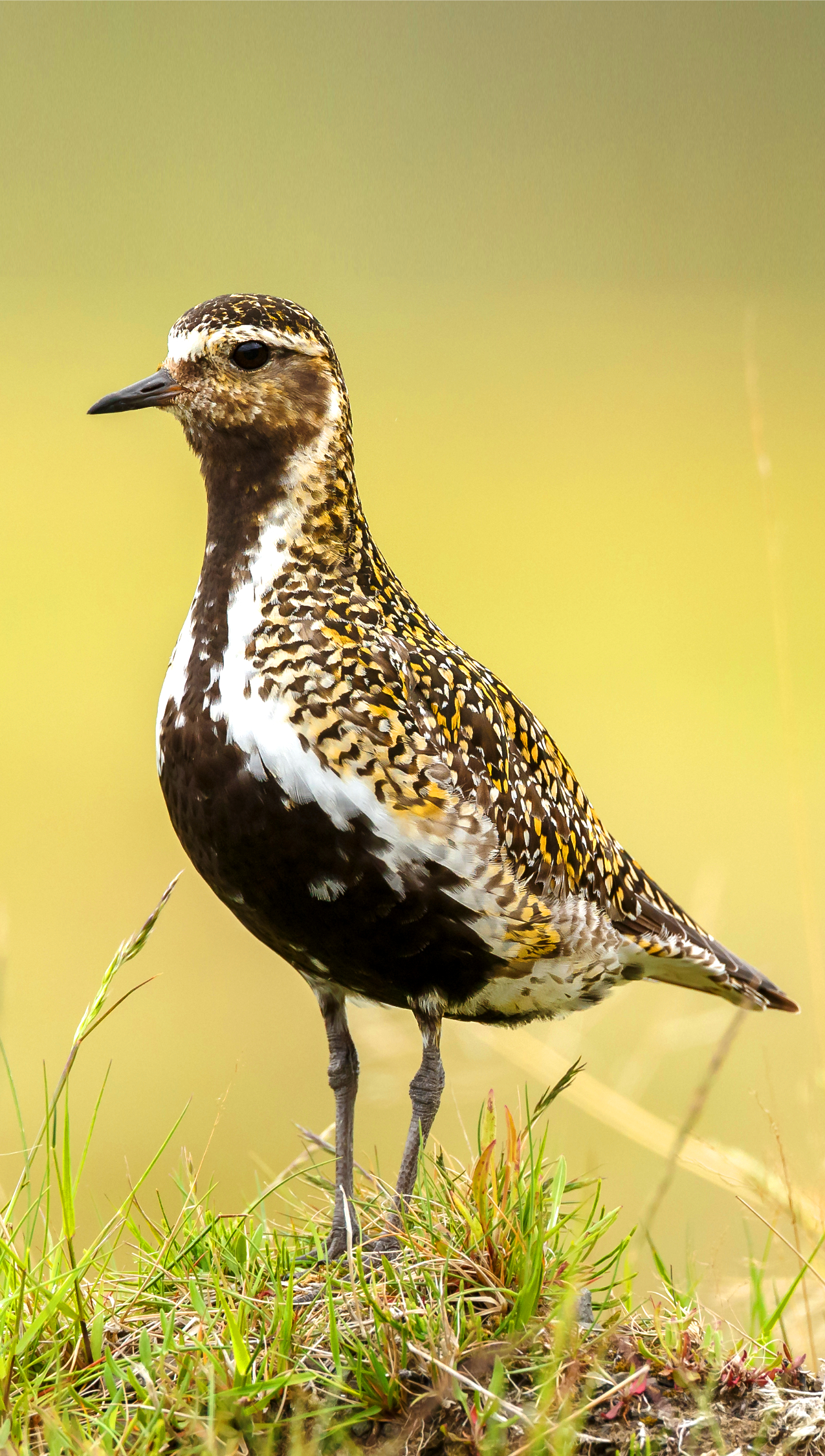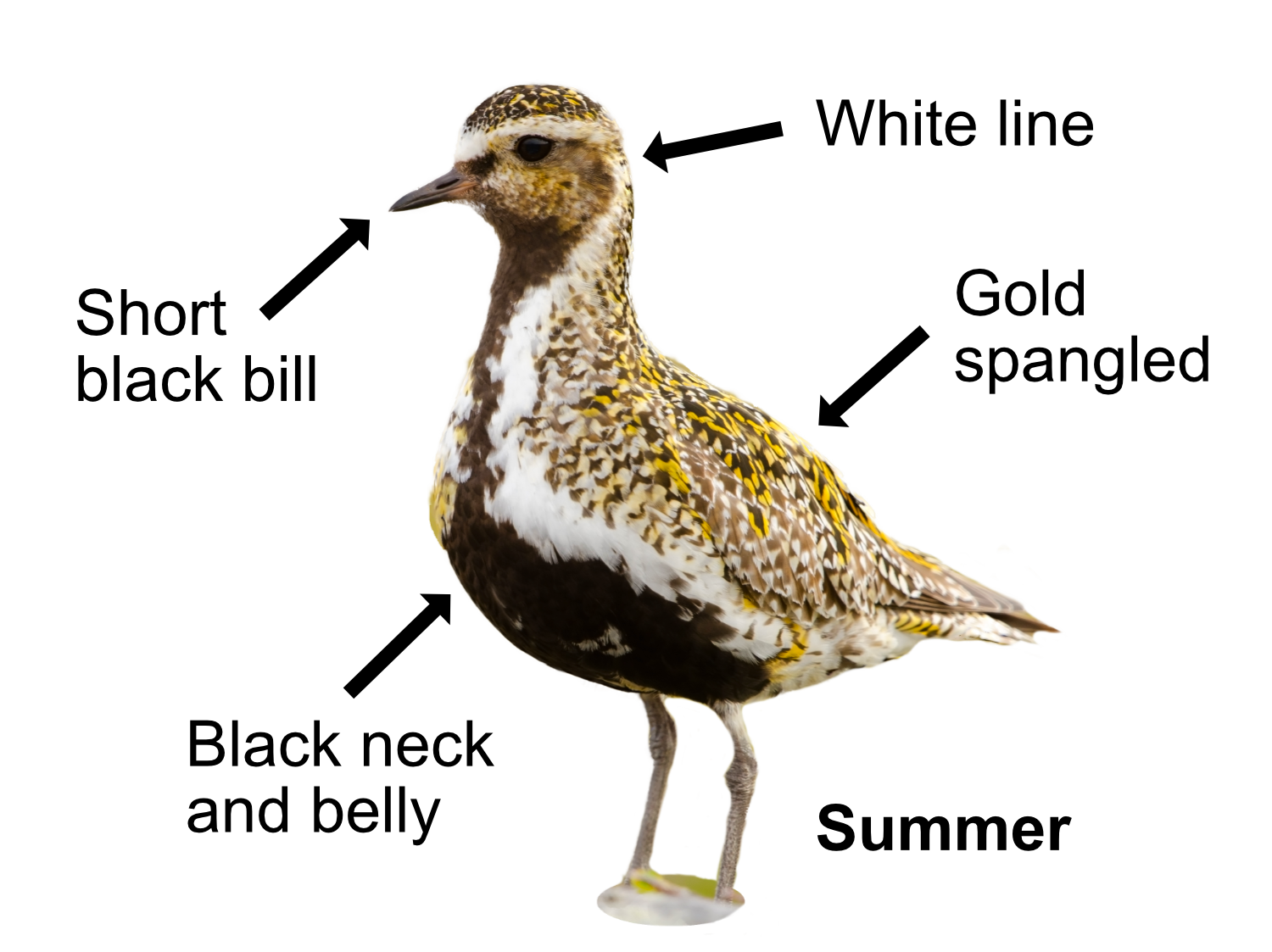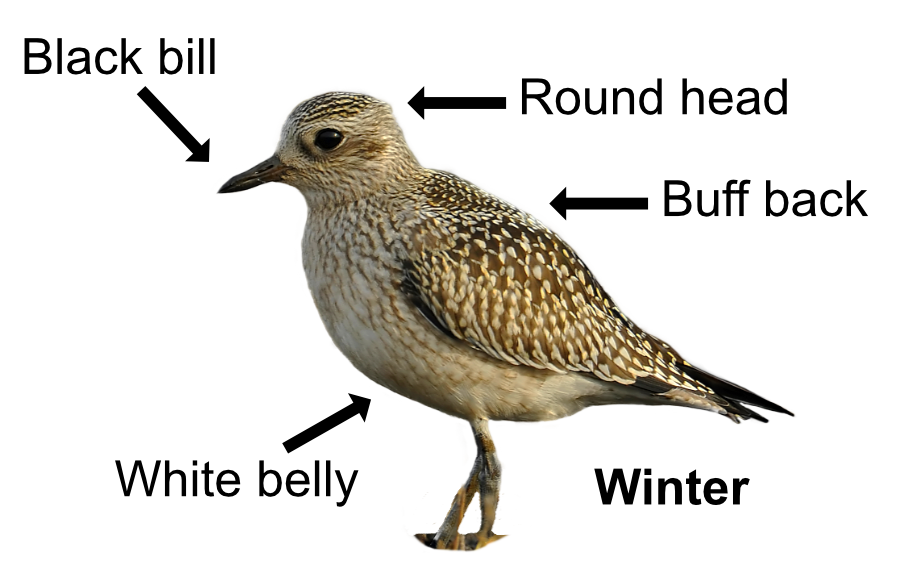
The Golden Plover is a medium-sized plover with distinctive gold and black summer plumage. In winter, when the black plumage is replaced by buff, they form large flocks. They fly in a fairly tight formation with rapid, twinkling wingbeats, sparkling white and golden brown, over grazing marshes in the low winter sun.

Golden Plovers are a medium-sized, upright wader with a small round head and short black bill. In summer, a broad white line separates their gold spangled back from their black face, neck and belly. While in winter, they have a duller buff breast and back with a white belly. In flight, they have noticeable white ‘armpits’. There is a very faint wing bar and the wings are slightly longer than the tail. The flight action is rapid and powerful, with regular wingbeats. Their call is a lonely sounding, murmuring "too-ee". Golden Plovers can be confused with Grey Plovers, but in flight the Golden Plover has white armpits whereas the Grey Plover has black armpits. Golden Plovers differ from Lapwings by their sharp, pointed wings (Lapwings have bluntly rounded wings).
They feed on beetles, worms, caterpillars, ants, earwigs, spiders, snails and plant material, often foraging at night with the plover run-stop-tilt-stand action as they chase things on the ground.

Golden Plovers breed on the bleak northern uplands and tundra. In Icelandic folklore, the appearance of the first plover in the country means that spring has arrived. The males display over the heather moorland, chasing each other or doing a switchback flight over their territories, issuing a plaintive display call. In mid-April, both male and female prepare a shallow scrape nest on the ground. The 4 eggs hatch after 26 days and the young are cared for by both parents even though they can feed themselves. They can fly 25 days later and are soon independent. If danger threatens, mum or did will run towards the danger then runaway, sometimes dragging a wing to pretend injury and lure the intruder away from the nest.
Golden Plovers migrate south in winter. The 50,000 pairs that breed in northern Britain move to coastal marshes in large flocks, often mixing with Lapwings. They are joined by Golden Plovers from Iceland on the west coast and by up to a third of the Northern European Plovers on the east coast. As many as 420,000 can be here over winter. The number of Golden Plovers breeding in northern Britain has been declining, mainly from the loss of their moorland breeding grounds by over grazing or planting of forests. Golden Plovers can live for 12 years.
Their Latin name is 'pluvialis apricaria' from the Latin 'pluvia' for 'rain' and 'apricaria' meaning 'to bask in the sun'. People believed that Golden Plovers flocked when rain was imminent. They were also the origin of the Guinness Book of World Records. On 10 November 1951, Sir Hugh Beaver, then the managing director of the Guinness Breweries, went on a shooting party in County Wexford, Ireland. After missing a shot at a Golden Plover, he became involved in an argument over which was the fastest game bird in Europe, the Golden Plover or the Red Grouse. He soon found that it was impossible to confirm this in reference books and that there must be lots of similar questions, so the Guinness Book of World Records was born. It became a best seller within months.
There are two other species of Golden Plover: the American Golden Plover (which breeds in Canada and Alaska and winters in South America), and the Pacific Golden Plover (which breeds in northern Asia and winters in South Asia and Australia). Both species are extremely rare visitors to the UK. They vary in the amount of speckling on their backs and the width of the stripe that borders their summer black.